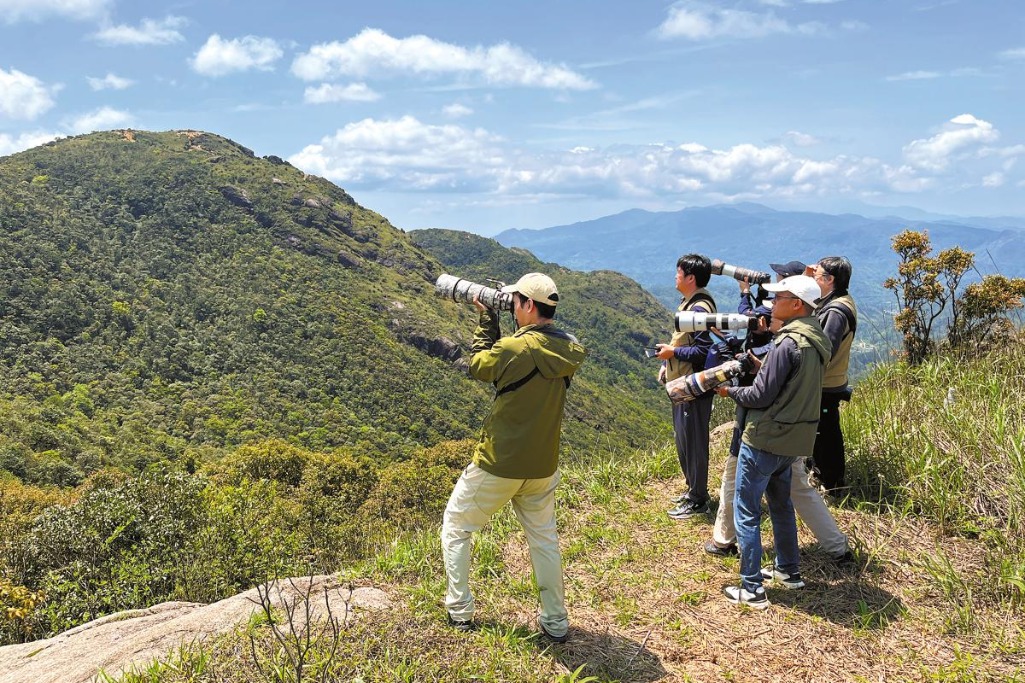Manas epic grows in stature


More translations, wider audiences ensure Kirgiz legend is becoming wider known
After the wedding ceremony, guests sat around and listened to an old man sing. He sang throughout the night until the morning arrived. His listeners had one bowl of butter tea after another, and none of them looked sleepy.
In 1953, when the newly founded People's Republic of China began national research on ethnic languages, Hu Zhenhua, a young graduate of an institute known today as Minzu University of China, arrived in the Xinjiang Uygur autonomous region to study the language of the Kirgiz people on the Pamir Plateau.
For a year, Hu and his colleagues traveled through all the grazing areas and pastures, sleeping in yurts with the Kirgiz people, herding cattle and sheep. He learned the Kirgiz language and participated in weddings, funerals, sheep and horse racing, and other folk activities.
The singing happened after many gatherings. What was it about? Hu didn't understand much at first. Later, after listening to it many times, he learned that it was a millennia-old epic known as Manas, and the singer who sings it is called a manaschi.
The young linguist was intrigued. He traveled back to Xinjiang again and recorded the Manas being sung many times. "I was 22 when I encountered the singing. Studying Manas has since been the most important theme of my research career," said Hu, who is a professor at Minzu University of China.
The country has invested huge efforts in the conservation and promotion of Manas. The epic Manas was included in the first batch of national Intangible Cultural Heritage lists in 2006 and was added to UNESCO's Representative List of Intangible Cultural Heritage of Humanity in 2009.
President Xi Jinping watched a Manas performance during his trip to Xinjiang in July last year, and talked with some of the manaschi.
"Cultural heritage such as Manas is not only the precious wealth of ethnic minorities but also of the whole Chinese nation. We should do a good job of protecting, inheriting, and sorting out the work so that it can be carried forward," he was quoted by Xinhua News Agency as saying.
Soul of a people
The epic Manas appeared in the 9th to 10th centuries. It tells the story of the extraordinary life of Manas, the hero, and seven generations of his descendants who led the Kirgiz people to fight against invaders and other evil forces. It illustrates the spirit of indomitability and unity and embodies the Kirgiz people's yearning for a better life, which is regarded as the soul of the Kirgiz.
Said to be 19 times longer than Homer's Odyssey, the epic spans eight chapters in 18 volumes and boasts more than 234,000 lines, making it the second-longest epic in the world.
"Manas, as a verse epic sung by folk artists, has dual properties of literature and folk art," said the UNESCO intangible heritage inscription.
"It records valuable information on the reproduction, survival, production, and development of the Kirgiz people, with rich contents about history, customs, literature, language, economy, military, medicine, astronomy, religion, ethics, and morality, and has become an indispensable encyclopedia for understanding and studying the Kirgiz people."
Hu, the professor, said in the epic, mountains, lakes, rapids, strong winds, eagles, and tigers are often used to symbolize heroes. It contains almost all the folk styles of the Kirgiz people, such as myths and legends, custom songs, and proverbs, which are related to the unique lifestyle and natural environment of the Kirgiz people.
The epic not only has a clear historical context, sharp and complex dramatic conflicts, distinct characters, and story twists, but also has beautiful and flowing sentences, vivid metaphors, with harmonious but strong rhythm, which is easy to sing.
"Wherever there are Kirgiz people, there are Manas concerts. For thousands of years, performers have sung the Manas, processing and embellishing ancient wisdom," said Hu.
"Whenever there is a festival get-together, a manaschi always sings the epic. Some manaschi can sing from night to morning, or even for days and nights in concert competitions."
In addition to Xinjiang, the main places where Manas is sung are Kyrgyzstan, Kazakhstan, and Uzbekistan. Kirgiz people who live in Afghanistan and northern Pakistan also perform the Manas.
























